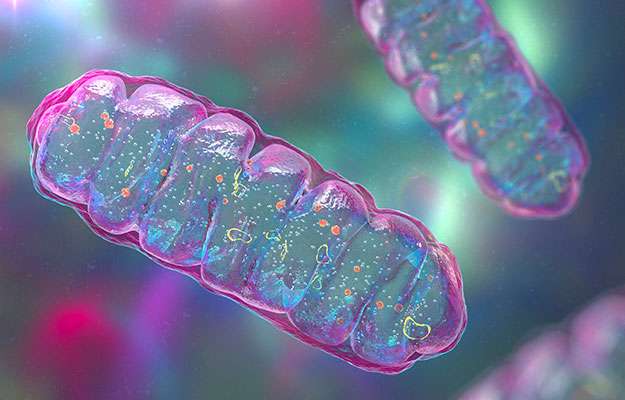The mitochondria have long been regarded as the source of energy for various bodily functions. Recently, the regulation of these organelles has also been associated with the potential to achieve longevity. For this reason, exploring how to increase the capacity of the mitochondria via mitochondrial biogenesis may help improve our overall health.
RELATED: What Is the Function of the Mitochondria to Longevity
Maintain Excellent Health by Increasing Mitochondrial Biogenesis
The mitochondria possess a unique label as the “powerhouse of the cell” due to their energy-generating capacity. But, what are they exactly? And why is mitochondrial health essential?
The Mitochondria: The Cell’s Powerhouse
Mitochondria are cell organelles vital for many biological processes. These organelles are responsible for generating ATP to create cellular energy, hence known as the cell’s powerhouse. Our cells require ATP for energy storage and transfer within the cell. The mitochondria produce most of the energy the body needs, accounting for over 90 percent of the cellular energy required for normal bodily functioning and growth.
However, as we age, the capacity to generate the mitochondria’s energy progressively decreases. This decline in the energy-generating ability is due to the naturally occurring deterioration of the mitochondria, known as mitochondrial dysfunction. Therefore, finding a method for increasing the activity and content of the mitochondria, or mitochondrial biogenesis, is a milestone in improving mitochondrial and overall health.
What Is Mitochondrial Biogenesis?

Mitochondrial biogenesis is how mitochondria increase in their number, mass, and size. This process plays a role in controlling cell metabolism, cellular signaling, and regulating the production of mitochondrial reactive oxygen species (ROS). For correct mitochondrial biogenesis to occur, the coordinated synthesis and import of mitochondrial proteins are required. Mitochondrial proteins are proteins found within the mitochondria. These proteins play a variety of roles in mitochondrial activity.
Why Is Mitochondrial Health Important?
Mitochondrial homeostasis is the state in which the mitochondria are steadily maintained by mitochondrial biogenesis and the selective removal of damaged mitochondria (mitophagy). Mitochondrial health is essential because dysregulation in mitochondrial functions is linked to mitochondrial dysfunction, which has been implicated in several chronic disorders. Likewise, mitochondrial homeostasis is also crucial since it determines the balance of the content of the mitochondria, which plays a significant role in energy metabolism.
RELATED: 4 Health Benefits of Elamipretide (SS-31)
How to Increase Mitochondrial Biogenesis
Mitochondrial biogenesis can be increased by environmental stressors at regulated levels, including:
High-intensity Interval Training
Exercise has long been thought to be the key to building a healthy body. People implement physical activities in various ways, yet all share the same goal: increasing muscle and reducing fat. However, little do we know about the additional benefit of exercise on the cellular level to benefit mitochondrial health. One of the first observations to establish the association between the mitochondria and exercise derives from the difference in mitochondrial activity and content in different muscle groups.
For example, the more active muscles, such as the heart, have more mitochondrial activity and content than the less active muscles, such as the back muscles. This finding suggests that regular physical activity may increase mitochondrial biogenesis. Indeed, according to a report, high-intensity interval training such as biking and running may cause cells to make more proteins for the mitochondria, effectively increasing mitochondrial biogenesis. Specifically, the subjects implementing interval training experienced a dramatic increase of up to 69 percent in mitochondrial capacity.
How to do high-intensity interval training for mitochondrial health? High-intensity interval training (HIIT) refers to the repeated alternation of quick bursts of vigorous exercises followed by extended periods of low-intensity recovery. Through active activities, you should reach at least 80 percent of your maximum heart rate for at least 30 seconds, then continue with longer resting exercises in a 2:1 ratio. Aim for 8 to 12 reps for about ten different exercises that target all muscle groups in each workout. You can apply HIIT for sprinting, swimming, push-ups, stationary biking, and stair climbing.
Caloric Restriction
Calorie restriction, in which a person consumes fewer calories than usual, has provided a wide range of benefits, including reducing weight and controlling blood sugar by resetting metabolism. This range of uses has recently been extended to the cellular level regarding the health of the mitochondria. Research shows that reducing overall calorie intake without malnutrition or deprivation of the essential nutrients stimulates the proliferation of mitochondria. Caloric restriction does not affect ATP production, as the mitochondria may function more efficiently to maintain the optimal amount of ATP.
How to implement caloric restriction for mitochondrial health? Any weight loss plan that cuts down on your daily calorie intake counts as caloric restriction. Suppose you typically consume 2,500 calories per day. In that case, limit it to 1,200 calories. Counting your calories, using fewer extra ingredients, adding more vegetables, and reducing sugar help you stick to a calorie-restricted diet. Remember that caloric restriction does not mean cutting down on the number of meals. On this account, dividing your meals into smaller ones may also be helpful.
The benefits of vigorous exercise and caloric restriction have long been established. Yet, it is an exciting finding that these regimes also have the potential to affect mitochondrial health positively.
Yunique Medical provides FUNCTIONAL MEDICINE for optimized health and performance. We offer customized, scientifically advanced treatments to create a new state of human thriving. Why be ordinary when you can be optimal?
HUMAN 2.0 begins here!
Contact us to schedule your FREE consultation at one of our three locations in Florida – Ocala, Fruitland Park (The Villages), and Daytona.
UP NEXT:

